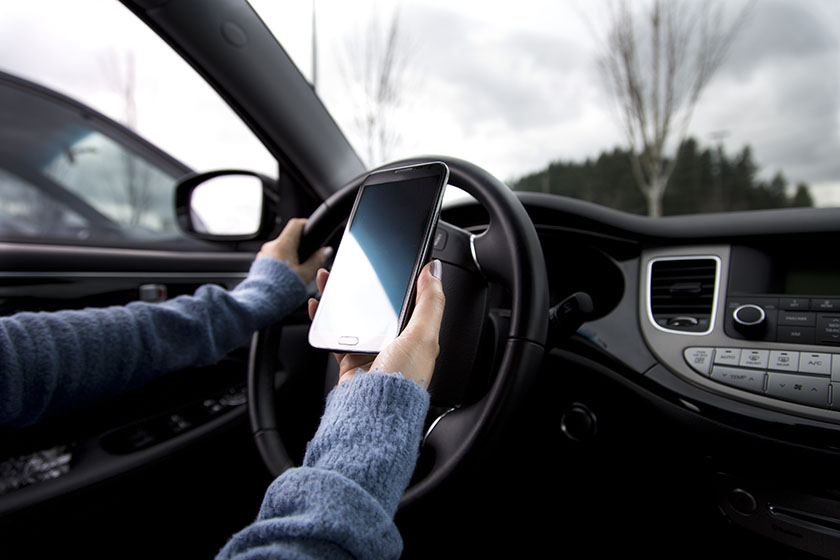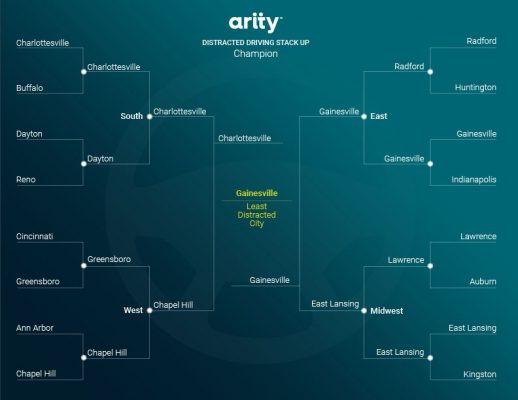New Year’s Eve driving behavior trends 2025 Read article


The month of April signifies the arrival of several things, including the hijinks of April Fools’ Day on the first, the beginning of the baseball season (go, Cubs!), as well as the dreaded Tax Day on the 15th. However, April is also Distracted Driving Awareness Month, an issue that has become a major challenge for every driver as well as anyone connected with the automotive and transportation industry. At Arity we believe the time has come for real and urgent action.
Earlier this year, the National Safety Council announced that for the second consecutive year motor vehicle deaths in 2017 topped 40,000, an increase of more than 25% from a low of 32,000 in 2011. Alarmingly, EndDD has found that talking on a cell phone behind the wheel quadruples a driver’s risk of an accident, and that risk doubles if the driver is texting.
Ninety-three percent of drivers have noticed others texting while driving, but only 42% admit to doing it themselves.
At Arity, we use a hyper-focused approach to help stop distracted driving. With over 10 years of collecting data from cars and mobile phones, we’ve analyzed nearly 35 billion miles of driving data. Our work provides an unparalleled understanding of how distracted driving impacts road safety. By sharing these insights, we help consumers and companies understand how distracted driving affects drivers and passengers across the U.S. Every driver is part of the solution — so we work to empower them with the tools and technology they need to prevent different types of distracted driving.
While millions were glued to their televisions and devices, deeply involved in the madness happening on college campuses and arenas throughout March, Team Arity was creating a new kind of competition to illustrate the madness that is distraction happening on the roads. In the spirit of the big tournament, we held a Stack Up of our own to identify the least distracted drivers in college towns across the country.
Like the big basketball tournament, aka the Big Dance, Arity’s first annual Distracted Driving Stack Up allowed the most passionate basketball fans to watch the final Safe Sixteen, including #AnnArbor, #Lawrence, #Gainesville, and #EastLansing, go head to head in the name of safety. Our final matchup between Gainesville and Charlottesville was a swampy, muddy battle and appropriately the men and women from gator country triumphed! Appropriately the city was once named by one of best places to live and play in the U.S., big kudos to the drivers of Gainesville for keeping their eyes on the prize as well as the road.

Arity recently collaborated with Murphy Research on a driving study as part of a larger effort to better understand driver habits. Our research revealed drivers know distraction is an issue — but they have been slow to recognize the part they play to stop distracted driving. Personally, I see it as an insightful way to map our individual narrative, one telling stop at a time that reveals a bigger picture in aggregate. To that end, some of the findings of the study were very telling, here are the highlights:
In the end, the personal perception of a majority of U.S. drivers believe that they can operate a car safer than their fellow motorists, but the unfortunate and sometimes fatal outcomes reveals that this perception is false. We all play a part in this kind of risky behavior and every one of us needs to act immediately. The text from your mom that you just have to read, the snap from your roommate that you know is hilarious, or the email you urgently want to send out while behind the wheel can wait, it must wait. And if that’s not enough for you to put the phone down, perhaps a financial incentive might be.
There’s so much more we can do. Tens of millions of smartphone users are on the road every day in the U.S. Their devices provide real-time access to the raw data we need to not only understand situational driving risk, but also stop distracted driving. Access at that scale provides for powerful personal perspective; wouldn’t you want access to those insights? As a company, all of us at Arity are devoted to the ethos of turning that kind of raw material into insights and using those learnings to create smarter drivers and safer roads for everyone.
In February, we launched the first driving score that includes distracted driving insights informed by claims data. The Arity Driving Score is a unique solution that analyzes drivers’ mobile phone usage on the road alongside corresponding claims data. This combination generates credible distracted driving data on how distracted behaviors increase accident-related risks. With this data, we can correlate phone usage with actual loss. Up until now insurers have had to guess how much an accident caused by distracted driving would cost – guess no more.
But it’s about more than a discount. We encourage insurers to share insights from customers’ driving behavior to motivate and reward them for safe driving habits. By informing and incentivizing customers, we can help stop distracted driving and make roads safer for everyone.
At our core, combatting a major challenge such as Distracted Driving is exactly why Arity was created by our parent company Allstate. It is our mission to place a very powerful, data-driven mirror on the transportation challenges of our times. What we learn from these efforts may be disappointing, such as the distracted driving study findings, but that’s not necessarily a bad thing. These insights will empower not just Arity but the whole transportation ecosystem to begin to tackle and solve these challenges together.